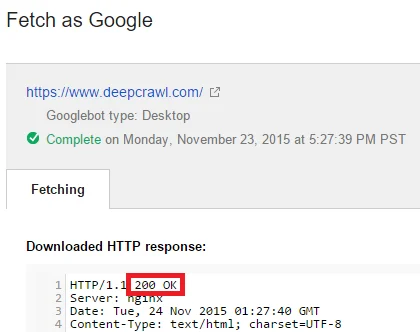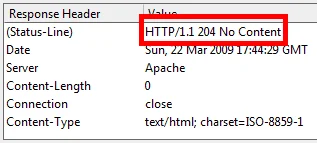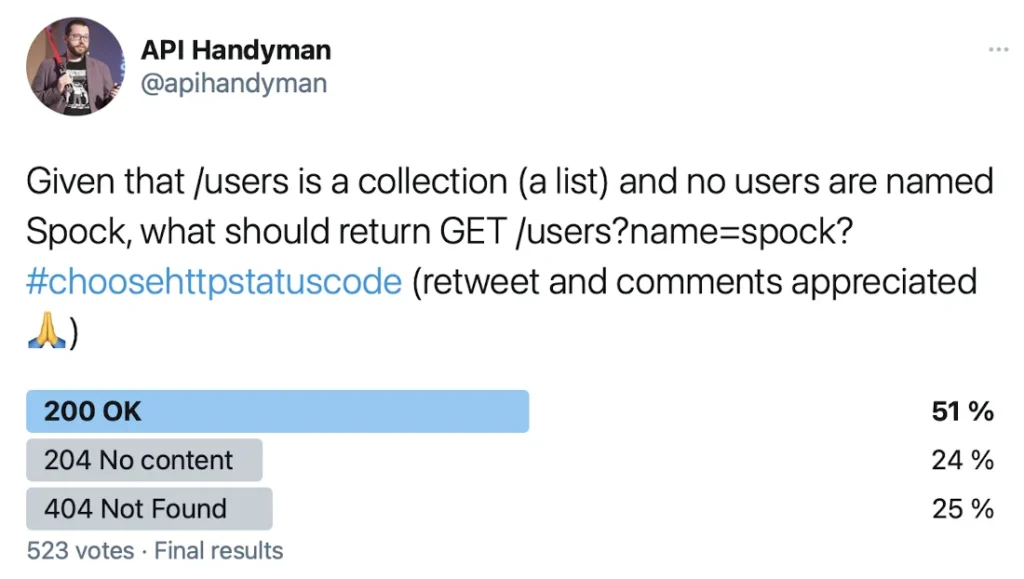HTTP status codes serve as a standardized method for servers to communicate outcomes to clients. Among these, the 200 and 204 status codes are often seen as interchangeable by those unfamiliar with their nuanced purposes.
However, these codes signal very different scenarios in terms of response structure, payload, and client-side behavior.
Knowing when to use each piece of code can influence efficiency, clarity, and performance for business-critical systems, especially those that involve APIs or frontend-backend synchronization.
Misusing them could result in unintended behaviors, poor resource handling, or unnecessary data transfers.
This blog will provide a comprehensive breakdown of HTTP 200 and 204, their definitions, practical usage, and when to leverage each for optimal application behavior across modern web environments.
Table of Contents
What Is HTTP Status Code 200?
HTTP status code 200, labeled “OK,” is the most commonly encountered success code in web communications. It indicates that the server has successfully processed the client’s request and that a response body is included.

This body typically contains the requested resource or a confirmation of the action that was taken. The presence of content in the response is what distinguishes 200 from other 2xx codes.
This status code is widely used in HTTP methods like GET, POST, PUT, and PATCH. For instance, in a GET request, a 200 response usually includes the requested data, such as JSON, HTML, or XML.
In POST or PUT operations, the 200 code might include metadata, success messages, or the updated resource.
The 200 status code is also highly visible in browser interactions and monitoring tools. From a client perspective, receiving a 200 often triggers UI updates, data processing, or further actions based on the response content.
Keep in mind that while 200 denotes success, it assumes the client is expecting and will process the content provided. Therefore, using this code for operations that do not require a response body could lead to inefficiencies or misinterpretation in client-side logic.
What Is HTTP Status Code 204?
HTTP status code 204, known as “No Content,” also signifies a successful request, but it explicitly indicates that the server is returning no response body.
Unlike the 200 code, which assumes that content will be included, 204 tells the client that the action was completed and no additional information is forthcoming.

This status code is commonly used in HTTP methods like DELETE, or in PUT/PATCH operations when no response body is necessary. It is particularly effective for optimizing background operations or asynchronous tasks where confirmation of success does not require extra data.
For example, when a resource is deleted successfully, a 204 response prevents the need to send back a full page or object.
The 204 code plays a critical role in improving network performance. By omitting unnecessary payloads, it reduces bandwidth usage and response parsing time on the client side.
However, it requires careful frontend handling, as some JavaScript libraries or client applications may misinterpret a lack of content as a failure or incomplete operation.
It is essential that no message body be included in a 204 response. Doing so violates the HTTP specification and may trigger errors or warnings in strict client implementations.
Correct implementation ensures seamless interaction between server and client in minimal-content workflows.
Key Differences Between 200 and 204
Although both 200 and 204 status codes confirm a successful request, their implications in client-server communication differ significantly. These differences impact how clients interpret and react to responses, especially in API-driven environments or JavaScript-heavy applications.
Status code 200 assumes the presence of a message body. The client expects content for rendering, updating UI, or proceeding with further logic. In contrast, a 204 response indicates no content is forthcoming, instructing the client that nothing needs to be processed or displayed.
The use of 204 improves efficiency in operations where data transmission is unnecessary. However, failure to manage client-side expectations can result in misinterpretations or skipped workflows. The table below summarizes their key differences:
| Aspect | HTTP 200 OK | HTTP 204 No Content |
| Response Body | Included | None |
| Client Action Expected | Process/display response | Proceed without UI update |
| Common Use Cases | GET, POST with content | DELETE, background PATCH |
| Efficiency Considerations | Higher payload | Optimized for bandwidth saving |
| UI Interaction | Often triggers visible updates | Silent success without display |
When to Use 200 vs 204 in Real-World Scenarios
Deciding between 200 and 204 depends on both the technical context and user experience goals. A clear understanding of the communication flow between server and client ensures appropriate usage.
In CRUD operations, 200 is preferred when the client requires data following the request. A GET request fetching user details or a POST request returning a created resource should return a 200 status. It ensures the client receives what it needs to continue processing or rendering.

In contrast, 204 is more suitable for operations that change the state of a resource without requiring new data. A DELETE request, for instance, often needs no additional explanation once the item is removed. Returning a 204 helps avoid unnecessary payloads.
Here are some practical examples:
- Updating user preferences via an AJAX PATCH call that doesn’t require a visual confirmation → Use 204.
- Submitting a contact form where a confirmation message or next action is embedded in the response → Use 200.
- Removing an item from a shopping cart using a DELETE endpoint with no follow-up content → Use 204.
- Retrieving filtered search results or paginated content for display → Use 200.
From a performance standpoint, 204 is especially useful in mobile or high-frequency environments where conserving bandwidth is a priority.
However, developers must ensure clients are programmed to interpret 204 correctly. In SPA or API-integrated systems, sending a 204 without the proper frontend logic could inadvertently suppress UI feedback, leading to poor user experiences.
Choosing between these codes is not merely semantic; it’s a structural decision that can affect application responsiveness and clarity.
Impact on Front-End Behavior
The difference between 200 and 204 responses is especially noticeable in how front-end applications behave upon receiving them.
A 200 response typically contains a payload, such as JSON or HTML, which front-end logic can parse to render content, display messages, or trigger follow-up actions.
In contrast, a 204 response contains no body, leading to silent success handling. If the front-end logic expects a message or data but receives nothing, it may interpret the absence as an error or display nothing, confusing users.
This is particularly critical in single-page applications (SPAs) or AJAX-driven interfaces where response content directly informs the UI. A 204 used incorrectly in such contexts results in poor user feedback or broken workflows.
Thus, front-end developers must anticipate and appropriately handle both types. Aligning status codes with the UI’s response handling logic will allow consistency in user experience, particularly for interactive or asynchronous operations.
Performance and Network Efficiency
The 204 status code offers a performance advantage in scenarios where content delivery is unnecessary. Since it omits the message body entirely, the response is smaller in size, reducing bandwidth consumption and decreasing processing overhead on both server and client sides.
Cut Down on Bandwidth Use with This Easy Fix
It makes 204 particularly efficient for background updates or state-change acknowledgments, such as marking a task as complete or registering a silent event.
In high-frequency API calls (like telemetry pings or polling mechanisms), the difference in response size adds up, improving system responsiveness and throughput.
HTTP 200, by comparison, includes a body, even if minimal. While it’s useful for delivering content or status metadata, it imposes a higher network cost.
Therefore, the payload requirements should be considered when choosing between 200 and 204. If a user-facing confirmation or data structure is needed, 200 is appropriate.
If not, using 204 can meaningfully reduce network noise, particularly in large-scale distributed systems or mobile environments with limited bandwidth.
Developer Pitfalls and Misuses
Understanding where developers go wrong with 200 and 204 is critical to avoiding functionality issues in production environments.
- Using 204 When a Body Is Expected: Developers may return a 204 status in cases where the front-end expects JSON or confirmation text. This leads to parsing errors or silent failures on the UI.
- Adding a Body to 204 Responses: Some mistakenly attach data to a 204 response, violating the HTTP specification. Clients that strictly follow the spec will ignore the body, resulting in incomplete operations.
- Overusing 200 for Every Operation: Defaulting to 200 even when no content is needed inflates response sizes. This increases latency and wastes bandwidth, particularly in high-volume applications.
- Inconsistent Status Code Use Across Endpoints: When some endpoints return 204 for updates while others use 200 inconsistently, it confuses client logic and complicates response handling.
- Not Documenting Behavior Clearly in API Specs: Failure to document when a 204 is expected leads to front-end developers misinterpreting empty responses as errors or server issues.
To avoid these mistakes, be sure each status code is selected based on the presence or absence of a required payload. Also, consistently document the behavior in API specifications for consumer clarity.
Best Practices for Status Code Usage
Selecting between 200 and 204 should be a deliberate part of API and response design. The following best practices can guide proper implementation:
- Use 200 When a Response Body Is Required: This includes success confirmations, error details, or updated data that the client must process or display.
- Use 204 When No Response Body Is Necessary: This is ideal for silent actions like toggling a feature, marking a notification as read, or background sync confirmations.
- Never Include a Response Body with 204: Ensure back-end services and frameworks suppress body generation when sending 204 status codes.
- Maintain Consistency Across Similar Endpoints: Avoid mixing 200 and 204 for similar actions unless the response content requirements differ significantly.
- Document Expected Behavior Clearly in API Docs: Front-end developers need to know whether to expect a response body or not, and what each status code implies.
Only API Documentation Tutorial You Will Ever Need
Following these principles consistently leads to more efficient communication between systems and avoids costly misunderstandings between client and server implementations.
Final Note
Understanding the nuanced differences between HTTP status codes 200 and 204 is crucial for building performant and predictable web applications. While both signify successful operations, their implications for data transfer, front-end logic, and API design differ considerably.
Using 200 makes sure the client receives a structured response, while 204 communicates success without sending content. The choice between them can directly affect application efficiency, user experience, and maintainability.
For business owners overseeing digital infrastructure, ensuring your development team uses these codes appropriately is foundational to delivering seamless and optimized digital services across all platforms and users.


